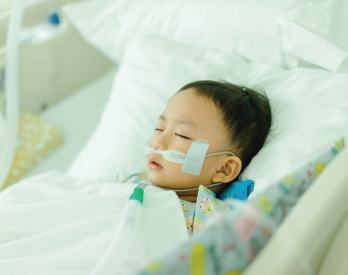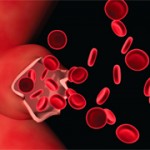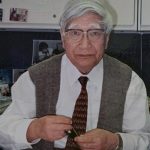
MIA Studio / shutterstock.com
A soon-to-be published guideline from the ACR and the Vasculitis Foundation on Kawasaki disease underscores the importance of early diagnosis and intensified treatment for people with this serious condition.1 Intravenous immunoglobulin (IVIG) remains the treatment mainstay, and prompt, aggressive treatment may be able to reduce the risk of serious complications in some patients. The guideline follows other recent, jointly published vasculitis guidelines.2-4
Kawasaki Disease
In 1967, Tomisaku Kawasaki, MD, was the first to recognize the syndrome that became known as Kawasaki disease.5 The acute, systemic, medium-vessel vasculitis is found most often in patients younger than 5. The most common form of childhood primary vasculitis globally, it is also the most common cause of acquired heart disease in developed countries.6 Currently, despite best available treatments, a substantial portion of patients still develop coronary artery aneurysms, with an even greater risk in infants younger than 6 months old.6 These can cause serious complications, including cardiac infarction and death.
Guideline Creation Process
As with previous recent ACR guidelines, the guideline development team employed the GRADE methodology (Grading of Recommendations, Assessment, Development and Evaluation) to ensure a systematic approach. The standard PICO format (patient population, intervention, comparison, outcome) was used to develop the specific clinical questions to be evaluated. Ultimately, voting panel members voted on each specific PICO question to produce the final recommendations in the guideline.

Dr. Gorelik
One core team member was Mark Gorelik, MD, an assistant professor in the Division of Pediatric Rheumatology, Allergy and Immunology at Columbia University, Vagelos College of Physicians and Surgeons, New York. Dr. Gorelik points out that this new ACR guideline on Kawasaki disease is not meant to supplant the existing 2017 guideline from the American Heart Association (AHA).7 Instead, the ACR guideline predominantly focuses on the patients whom rheumatologists are asked to manage most frequently—patients with symptoms of arthritis or macrophage activation syndrome, or patients with particularly severe or refractory disease.
A pediatric infectious disease specialist, Adriana H. Tremoulet, MD, MAS, professor of pediatrics and the associate director of the Kawasaki Disease Research Center at the University of California, San Diego, also served on the voting panel. Compared with the AHA guideline, she says, the ACR guideline is more treatment focused and less directly centered on cardiovascular issues, and it attempts to fill in questions that have emerged since the earlier guideline was created.
Partly because of the state of the emerging evidence on this topic, reaching consensus was challenging in some areas. “We still just don’t know a lot about the mechanistic or molecular basis of Kawasaki disease, and that also makes it harder to develop the evidence,” says Dr. Gorelik.
Recommendations
Following is a selected discussion of some of the recommendations. For more detail and to see the full context of these recommendations, refer to the full guideline document.
Good Practice Statement: IVIG is the standard-of-care therapy for the initial treatment of Kawasaki disease.
Although much remains unclear about the optimal treatment of Kawasaki disease, we know the administration of IVIG as soon as possible after diagnosis is extremely effective in reducing complications. “We wanted to define this as the central thesis of Kawasaki disease therapy,” Dr. Gorelik says.
Conditional Recommendations: 1) Patients at high risk of IVIG resistance or developing coronary artery aneurysms should receive IVIG with adjunctive glucocorticoids as initial therapy instead of IVIG alone. 2) Such patients should receive IVIG with other non-glucocorticoid immunomodulatory agents over IVIG alone.

